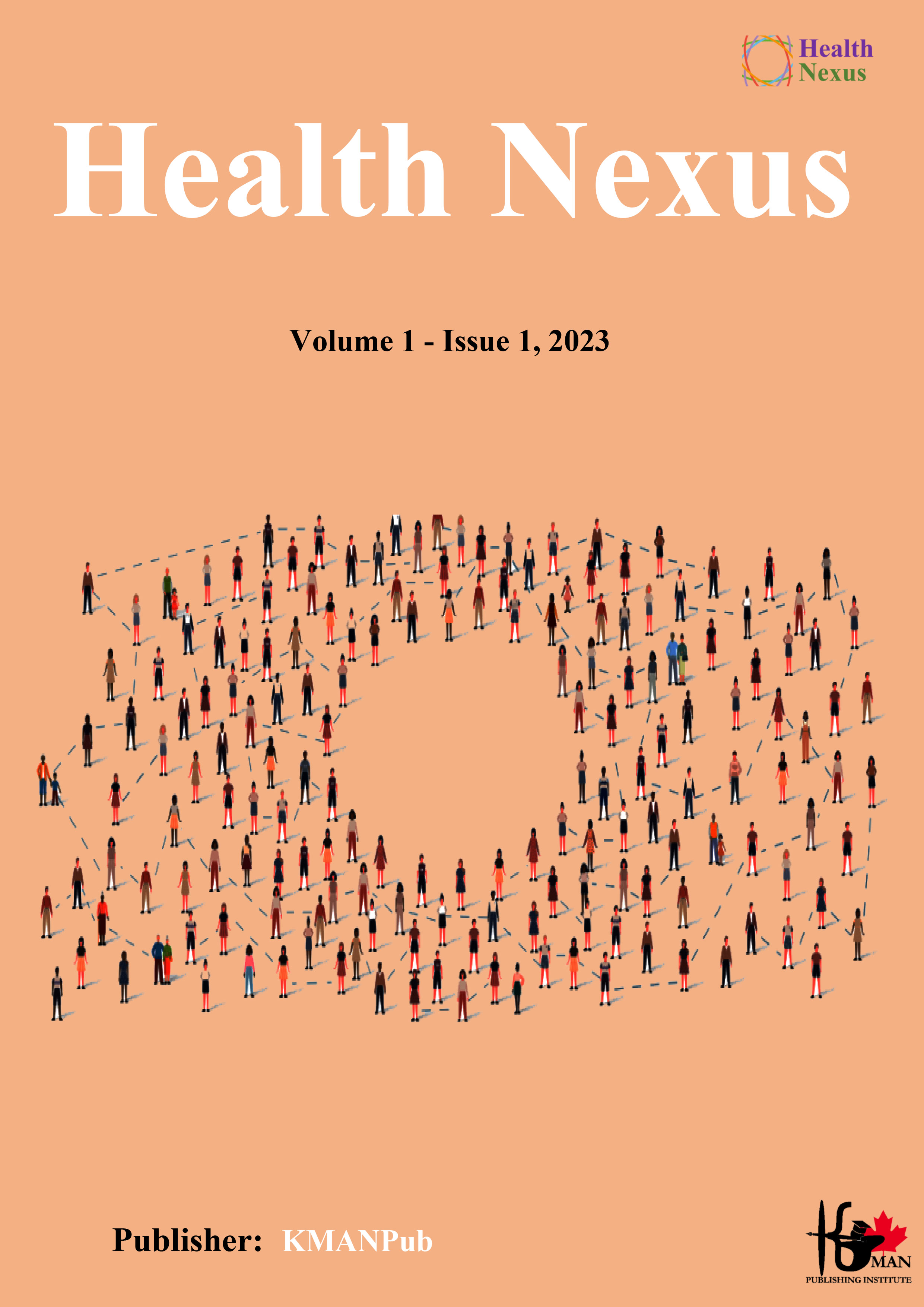Investigation of Differences in Early Maladaptive Schemas and Defense Mechanisms in Individuals with Gender Identity Disorder Compared to Normal Individuals
Keywords:
Early maladaptive schemas, defense mechanisms, gender identity disorderAbstract
This study aimed to investigate the differences in early maladaptive schemas and defense mechanisms between individuals with gender identity disorder and normal individuals. The research design was causal-comparative. The study population comprised all individuals with gender identity disorder (female to male and male to female) and normal individuals in Shiraz city in the year 2023. Out of the population, 30 individuals with gender identity disorder who attended forensic medicine, psychiatric clinics, and gender change centers in Shiraz, and 30 normal individuals were selected through convenience sampling and studied. Young's Schema Questionnaire (YSQ) and the Defense Style Questionnaire (DSQ) were used for data collection. After data collection and extraction, the participants' scores were analyzed using univariate and multivariate analysis of variance with the SPSS-24 statistical software. The findings indicated significant differences in early maladaptive schemas (rejection and disconnection, impaired autonomy and performance, other-directedness, overvigilance and inhibition, and impaired limits) between individuals with gender identity disorder and normal individuals (p < .01). The results also showed significant differences in neurotic defense style and immature defense style between individuals with gender identity disorder and normal individuals (p < .01); and a significant difference was found in the mature defense style between the two groups (p < .05). Therefore, by identifying immature defense mechanisms and early maladaptive schemas and measuring their severity in individuals with gender identity disorder, psychological interventions (psychodynamic and psychoanalytic therapy) alongside other medical actions can be employed to reduce the severity of these mechanisms and schemas.
Downloads
References
1. Giuseppe MD, Perry JC. The Hierarchy of Defense Mechanisms: Assessing Defensive Functioning With the Defense Mechanisms Rating Scales Q-Sort. Frontiers in Psychology. 2021. [PMID: 34721167] [PMCID: PMC8555762] [DOI]
2. Cramer P. The Development of Defense Mechanisms. Journal of Personality. 1987. [DOI]
3. Cramer P. Defensiveness and Defense Mechanisms. Journal of Personality. 1998. [DOI]
4. Lee Y-J, Keum M-S, Kim H-G, Cheon EJ, Cho Y-C, Koo B-H. Defense Mechanisms and Psychological Characteristics According to Suicide Attempts in Patients With Borderline Personality Disorder. Psychiatry Investigation. 2020. [PMID: 32791818] [PMCID: PMC7449843] [DOI]
5. Hayden M, Müllauer PK, Beyer KJP, Gaugeler R, Senft B, Dehoust MC, Andreas S. Increasing Mentalization to Reduce Maladaptive Defense in Patients With Mental Disorders. Frontiers in Psychiatry. 2021. [PMID: 33776819] [PMCID: PMC7991294] [DOI]
6. Nasiri M, Donyavi R, Dousti Y. The Mediating Role of Defensive Mechanisms in the Relationship Between Social Phobia and Alexithymia in University Students. Journal of Holistic Nursing and Midwifery. 2020. [DOI]
7. Sepidehdam FS, Yousef K, Besharat M. The Relation Between Defense Mechanisms and Job Burnout Among Iran AIR Staff. International Journal of Social Science and Humanity. 2013. [DOI]
8. Bond M, Christopher J, Gautier M, Goldenberg M, Oppenheimer J, Simand J. Validating the Self-Report of Defense Styles. Journal of Personality Disorders. 1989. [DOI]
9. Blanco C, Kampe L, Wall MM, Liu S-M, Wang S, Caligor E, Olfson M. Approximating Defense Mechanisms in a National Study of Adults: Prevalence and Correlates With Functioning. Translational Psychiatry. 2023. [PMID: 36690611] [PMCID: PMC9870881] [DOI]
10. Jamilian H, Zamani N, Darvishi M, Khansari M. Study of Defensive Methods and Mechanisms in Developmental, Emotional (Internalization), and Disruptive Behavior (Externalization) Disorders. Global Journal of Health Science. 2014. [DOI]
11. Conversano C, Giuseppe MD, Lingiardi V. Case Report: Changes in Defense Mechanisms, Personality Functioning, and Body Mass Index During Psychotherapy With Patients With Anorexia Nervosa. Frontiers in Psychology. 2023. [PMID: 36895755] [PMCID: PMC9989464] [DOI]
12. Rubino IA, Saya A, Siracusano A. Signs of Defense in Obsessive-Compulsive Disorder: A Validation Study of the Defense Mechanism Test. Perceptual and Motor Skills. 2007. [PMID: 18380111] [DOI]
13. Panfil A-L, Frandes M, Nirestean A, Hurmuz M, Lungeanu D, Cristanovici M, et al. Interrelation Between Defensive Mechanisms and Coping Strategies in Psychiatry Trainees in Romania: A Multicenter Study. 2020. [DOI]
14. Ammari S, Deyreh E, Keykhosrovani M, Ganji K. The Effectiveness of Couple Therapy on Depressive Symptoms and Sexual Function in Women Affected by Infidelity. Razi Journal of Medical Sciences. 2023;29(7):54-63.
15. Moazzami Goudarzi B, Monirpor N, Mirzahoseini H. The the effectiveness of intensive and short-term dynamic psychotherapy on reducing the symptoms and defense mechanisms of obsessive-compulsive and avoidant personality disorders. medical journal of mashhad university of medical sciences. 2021;64(1):2482-95.
16. Yousefi R, Hashemi SGS, Sohrabi L, Abadi MH. The Association Between Early Maladaptive Schemas and Defense Styles With Hoarding Behaviour Among University Students. Practice in Clinical Psychology. 2018. [DOI]
17. Khademi M, Hajiahmadi M, Faramarzi M. The Role of Long-Term Psychodynamic Psychotherapy in Improving Attachment Patterns, Defense Styles, and Alexithymia in Patients With Depressive/Anxiety Disorders. Trends in Psychiatry and Psychotherapy. 2019. [PMID: 30994785] [DOI]
18. Laaksonen MA, Sirkiä C, Knekt P, Lindfors O. Self‐reported Immature Defense Style as a Predictor of Outcome in Short‐term and Long‐term Psychotherapy. Brain and Behavior. 2014. [PMID: 25161816] [PMCID: PMC4075638] [DOI]
19. Kipper L, Blaya C, Teruchkin B, Elizeth Paz da Silva H, Isolan L, Mezzomo KM, et al. Evaluation of Defense Mechanisms in Adult Patients With Panic Disorder. The Journal of Nervous and Mental Disease. 2005. [PMID: 16131945] [DOI]
20. Atmaca M, Yildirim H, Koç M, Korkmaz S, Ozler S, Erenkuş Z. Do Defense Styles of Ego Relate to Volumes of Orbito-Frontal Cortex in Patients With Obsessive-Compulsive Disorder? Psychiatry Investigation. 2011. [PMID: 21852988] [PMCID: PMC3149106] [DOI]
21. Sammallahti PR, Aalberg V, Pentinsaari JP. Does Defense Style Vary With Severity of Mental Disorder? Acta Psychiatrica Scandinavica. 1994. [PMID: 7832000] [DOI]
22. Lotfi-Hajilo N, Zarabian M-K, Ghodsi P, Shamsaei MM. Comparing of Symptoms, Defense Mechanisms and Coping Styles in Women and Men With Borderline Personality Disorder. Avicenna Journal of Neuro Psych Physiology. 2017. [DOI]
Downloads
Additional Files
Published
License

This work is licensed under a Creative Commons Attribution-NonCommercial 4.0 International License.


























